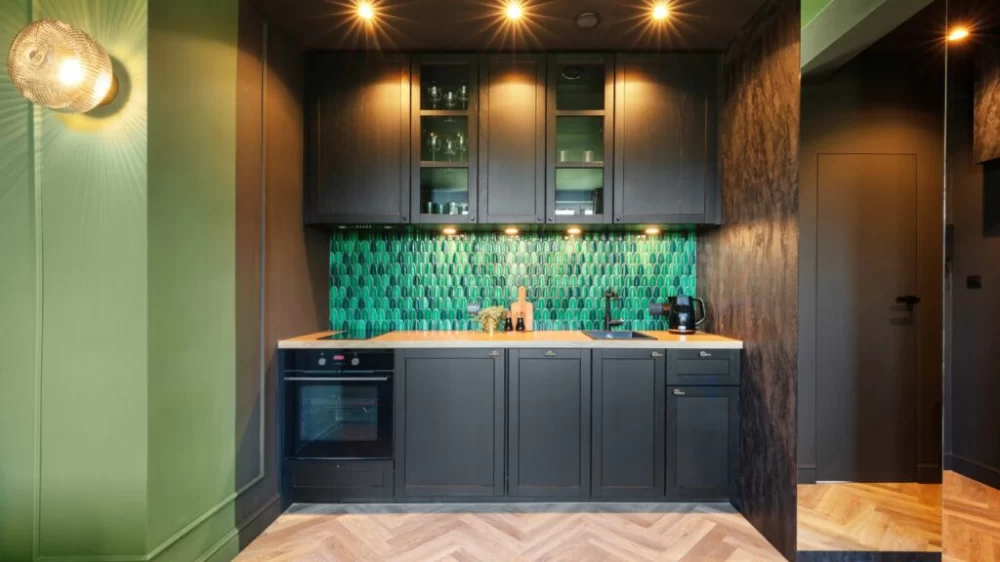
- Preparation-for-Kitchen-Light-Fixture-Installation
- Tools-and-Materials-Needed
- Step-by-Step-Installation-Process
- Common-Challenges-and-Solutions
- Professional-Tips-for-a-Successful-Installation
- Where-to-Find-the-Best-Products-and-Services
1. Preparation for Kitchen Light Fixture Installation
Installing a new light fixture in the kitchen is an excellent way to refresh the space, enhance functionality, and add style. However, preparation is key to ensuring a smooth, safe installation. Before beginning, it’s essential to turn off the power supply to the kitchen lighting circuit at the breaker panel to avoid any risk of electric shock.
Next, gather information about your current wiring setup. Kitchens often have complex electrical layouts due to multiple appliances and lighting zones, so understanding the existing wiring is crucial. In some cases, consulting the circuit breaker diagram or a professional electrician can provide peace of mind.
Finally, plan your lighting upgrade carefully. Consider the style, brightness, and energy efficiency of the new fixture. For example, many homeowners today prefer LED fixtures that offer long-lasting illumination and reduce energy bills. The right choice will depend on your kitchen’s size, décor, and lighting needs.
1.1 Safety First: Power Off and Test
Before any installation work begins, always use a voltage tester to confirm that the circuit is completely off. This simple step protects you from accidental shocks. Never skip this step, even if you’ve turned off the breaker.
1.2 Understand Your Existing Setup
Take a close look at the current fixture’s mounting and wiring. Are the wires secured with wire nuts? Is there a junction box? Knowing these details helps anticipate any additional equipment or modifications you might need.
2. Tools and Materials Needed for Kitchen Light Fixture Installation
Having the right tools and materials on hand will streamline the installation and reduce frustration. Here are the essentials:
2.1 Basic Tools
- Screwdriver set (both flathead and Phillips)
- Wire stripper and cutter
- Voltage tester
- Drill (in case new mounting holes are required)
- Ladder or step stool
2.2 Materials
- New light fixture with installation instructions
- Wire nuts or connectors
- Electrical tape
- Mounting bracket (usually included with the fixture)
In some kitchens, you may also need a new junction box or additional wiring if upgrading to a heavier or differently designed fixture. Always review the fixture’s installation guide carefully for any special requirements.
3. Step-by-Step Installation Process
The core of the project lies in the actual installation, which breaks down into manageable steps. This section provides a detailed guide from removing the old fixture to testing the new one.
3.1 Remove the Existing Fixture
After ensuring the power is off, carefully remove the old fixture by unscrewing the mounting screws and gently lowering it. Disconnect the wiring by unscrewing the wire nuts, making a note of which wires connect to each other—usually black (hot), white (neutral), and green or bare copper (ground).
3.2 Prepare the Wiring and Mounting
Inspect the wiring for any damage and strip the ends if necessary. Attach the new mounting bracket securely to the electrical box. This bracket will support the new fixture’s weight.
3.3 Connect the New Fixture
Match and connect the wires of the new fixture to the corresponding house wires: black to black, white to white, and ground to ground. Twist wires together tightly and secure with wire nuts, then wrap connections with electrical tape for extra safety.
3.4 Mount the Fixture and Test
Attach the fixture to the mounting bracket as per the manufacturer’s instructions. Once secured, restore power at the breaker and test the fixture to ensure it lights up correctly and safely.
4. Common Challenges and Solutions
Even a seemingly simple kitchen light fixture installation can encounter obstacles. Here are some common issues and practical solutions to help you troubleshoot:
4.1 Fixture Doesn’t Fit the Existing Junction Box
Sometimes new fixtures have a different mounting style or weight. If your new fixture is heavier or the mounting points don’t line up, consider installing a support brace or a larger electrical box designed for heavier loads.
4.2 Wiring Colors Don’t Match
In older homes, wiring colors may vary. If unsure, consult an electrician or use a voltage tester to identify hot, neutral, and ground wires before proceeding.
4.3 Fixture Flickers or Doesn’t Turn On
This could indicate loose wiring or a faulty switch. Double-check all connections and ensure the breaker and wall switch are functional. If problems persist, seeking professional help is advisable.
5. Professional Tips for a Successful Installation
To enhance your kitchen lighting installation experience, here are some tips that professionals often recommend:
5.1 Choose the Right Fixture for Your Space
Consider both style and light output. For example, a pendant light over an island offers focused task lighting, while recessed lights provide general illumination.
5.2 Don’t Skimp on Quality Components
Using high-quality wire connectors, sturdy mounting hardware, and energy-efficient bulbs not only ensures safety but also extends the lifespan of your new fixture.
5.3 When in Doubt, Hire a Professional
Electrical work carries risks. If you encounter complicated wiring, old or unsafe electrical boxes, or local code requirements, consulting a licensed electrician is a wise investment.
6. Where to Find the Best Products and Services
For those looking to upgrade their kitchen lighting, the website Improvement offers a curated selection of top-quality light fixtures, electrical supplies, and installation services. Whether you prefer a modern chandelier, energy-saving LEDs, or need professional installation, Improvement provides reliable recommendations tailored to your needs.
Browsing through Improvement can also give you inspiration for styles and functional lighting solutions, helping you achieve both a beautiful and practical kitchen environment.








